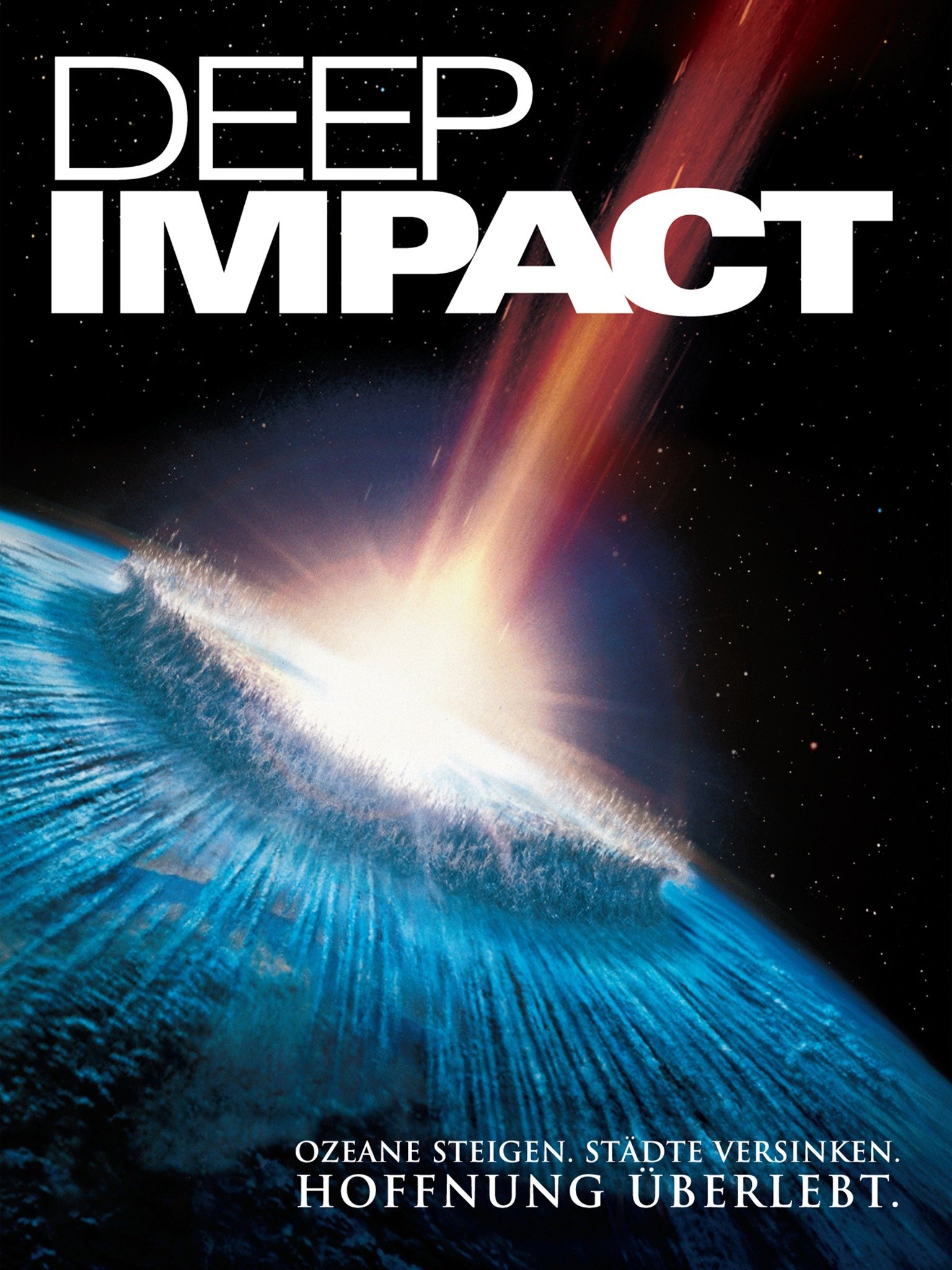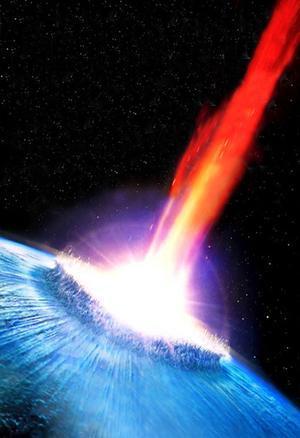


: 83–84 Artistic impression of the asteroid slamming into tropical, shallow seas of the sulfur-rich Yucatán Peninsula in what is today Southeast Mexico. Unknown to them, evidence of the crater they were looking for was being presented the same week, and would be largely missed by the scientific community.

Recognizing the scope of the work, Lee Hunt and Lee Silver organized a cross-discipline meeting in Snowbird, Utah, in 1981. : 82 There were no known impact craters that were the right age and size, spurring a search for a suitable candidate. Their paper was followed by other reports of similar iridium spikes at the K–Pg boundary across the globe, and sparked wide interest in the cause of the K–Pg extinction over 2,000 papers were published in the 1980s on the topic. The Alvarezes, joined by Frank Asaro and Helen Michel from University of California, Berkeley, published their paper on the iridium anomaly in Science in June 1980. : 1095 The Alvarezes' impact hypothesis was rejected by many paleontologists, who believed that the lack of fossils found close to the K–Pg boundary-the "three-meter problem"-suggested a more gradual die-off of fossil species. At the time, there was no consensus on what caused the Cretaceous–Paleogene extinction and the boundary layer, with theories including a nearby supernova, climate change, or a geomagnetic reversal. It was hypothesized that the iridium was spread into the atmosphere when the impactor was vaporized and settled across Earth's surface among other material thrown up by the impact, producing the layer of iridium-enriched clay. Iridium levels in this layer were as much as 160 times above the background level. The Alvarezes and colleagues reported that it contained an abnormally high concentration of iridium, a chemical element rare on Earth but common in asteroids. The main evidence of such an impact was contained in a thin layer of clay present in the Cretaceous–Paleogene boundary (K–Pg boundary) in Gubbio, Italy. In the late 1970s, geologist Walter Alvarez and his father, Nobel Prize-winning scientist Luis Walter Alvarez, put forth their theory that the Cretaceous–Paleogene extinction was caused by an impact event. It is now widely accepted that the resulting devastation and climate disruption was the cause of the Cretaceous–Paleogene extinction event, a mass extinction of 75% of plant and animal species on Earth, including all non-avian dinosaurs. The date of the impact coincides with the Cretaceous–Paleogene boundary (commonly known as the K–Pg or K–T boundary). Evidence for the crater's impact origin includes shocked quartz, a gravity anomaly, and tektites in surrounding areas. Hildebrand in 1990, Penfield obtained samples that suggested it was an impact feature. Penfield was initially unable to obtain evidence that the geological feature was a crater and gave up his search. The crater was discovered by Antonio Camargo and Glen Penfield, geophysicists who had been looking for petroleum in the Yucatán Peninsula during the late 1970s. It is the second largest confirmed impact structure on Earth, and the only one whose peak ring is intact and directly accessible for scientific research. The crater is estimated to be 180 kilometers (110 miles) in diameter and 20 kilometers (12 miles) in depth. It was formed slightly over 66 million years ago when a large asteroid, about ten kilometers (six miles) in diameter, struck Earth. Its center is offshore, but the crater is named after the onshore community of Chicxulub Pueblo. The Chicxulub crater ( IPA: i) is an impact crater buried underneath the Yucatán Peninsula in Mexico. Deep Impact stars Robert Duvall, Téa Leoni, Elijah Wood and Morgan Freeman, and was directed by Mimi Leder.ĭeep Impact is available as a limited edition of 750 individually numbered copies on flaming coloured vinyl.Chicxulub crater (Mexico) Show map of Mexico

While Armageddon was hitting the jackpot at the box office, Deep Impact can be seen as being the most scientifically accurate. Both focusing on humanity's fear of being hit by a giant rock or comet from space.
#Deep impact 2 movie#
An instant classic and one of the best pieces Horner recorded.ĭeep Impact was released in the same year as the other disaster movie Armageddon. The thematic part of this music is strong and the beauty lies in the unexpected when the giant comet is coming closer to earth. It's a multi-faceted piece, bringing the empathy with the characters to the viewers. The disaster movie which focuses on an asteroid hurtling towards earth grossed over $349 million worldwide. In the middle of the period where James Horner released successful soundtracks like Titanic and The Mask of Zorro another subtle and effective composition appeared, his soundtrack to the movie Deep Impact.


 0 kommentar(er)
0 kommentar(er)
